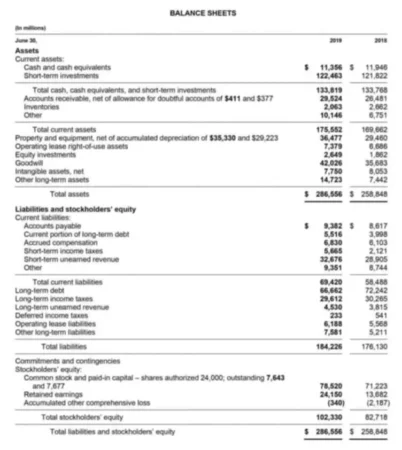Definition
Any enterprise, be it an international corporation or a small local store, has some resources necessary for its operation. But what is stockholders’ equity? You can come across this concept both on the pages of textbooks on economics and in accounting, but most importantly – in the real life of any enterprise.
Simple definition: stockholders’ equity is any investment of the owners, the value of which may change under the influence of various factors of economic activity. Equity is synonymous with net assets and shareholders’ or owners’ equity.
This is a financial indicator that characterizes the amount of funds (stocks or shares) owned by members of the entity. It is one of the most common financial metrics used by analysts to determine the financial health of a company. You can see its value in a Balance sheet, or you use a special formula for the calculation of its value.
Equation
The modern interpretation of the term “equity of an enterprise” is directly related to the theory of the owner’s priority, according to which Equity = Assets – Liabilities. This way, stockholders’ or owner’s equity is understood as all the initially invested or accumulated financial resources of the company during its existence, minus liabilities, namely:
- The physical capital of the enterprise: machinery and equipment, buildings and structures, land plots, stocks of raw materials, etc.
- Cash capital, that is, the funds required to support the business activities, including retained earnings.
Shareholders’ (stockholders’) equity shows what funds the founders of the company have at their disposal. Shareholders’ equity is not always a positive amount. If this is a positive amount, it means that the business has enough assets to pay for all of its obligations and there will still be something left for its owners.
Investors and lenders want this indicator to remain positive because this means that then they will be able to earn money or recover their debt. When the total amount of debt exceeds its value, equity goes into the negative zone. This, in turn, becomes a problem when a business has to repay the obligations and can lead to bankruptcy.
Examples
Let’s say you are an entrepreneur and want to start your own business, for example, open your own coffee shop. In the simplest case, there are no borrowed funds. You have enough money to rent a place, purchase equipment (coffee machines and grinders, cups, dishes, etc.) and raw materials for preparing drinks (coffee beans, milk, cream, syrups, sugar, etc.). All these resources will bring you income and they are all your own owner’s equity.
Now, let’s look at the Balance sheet above. Total assets in 2019 were $286,556 million and total liabilities were $184,226 million. If we use the accounting equation and do a little calculation ($286,556 million – $184,226 million), we will arrive at $102,330 million for the stockholders’ equity.
If we compare these numbers with a previous year, we can notice that the stockholders’ equity has actually increased. Analyzing other indicators, we can see right away that the retained earnings have almost doubled since last year and are the key reason the equity has increased.
Eager to know how to calculate stockholders equity? Read our blog.



















